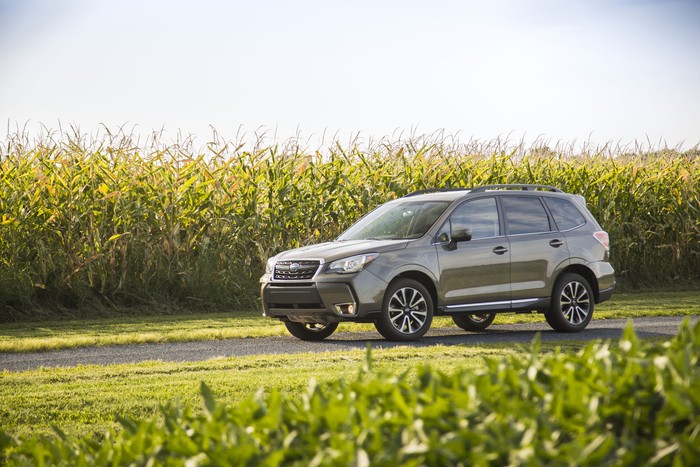
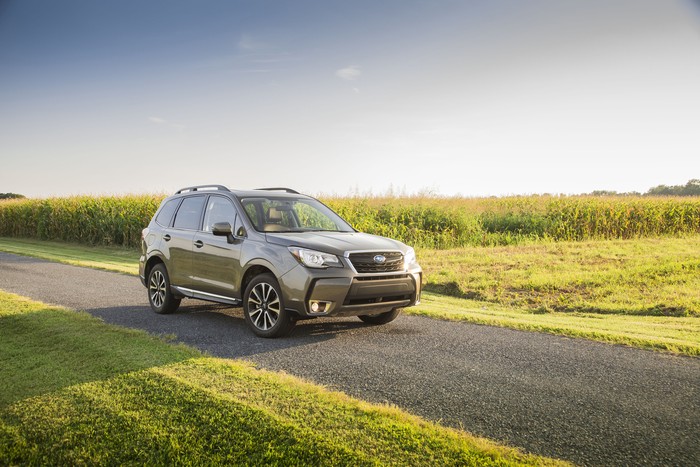
2018 Subaru Forester
Long known as a roomy, sure-footed but slightly dowdy compact crossover, the Forester is more stylish and commodious than before, and it's also much improved in an area that's increasingly important to a majority of buyers: fuel efficiency.
Overview
Whereas the last-generation model featured soft lines and an upright greenhouse, the new Forester boasts a sportier and more angular appearance thanks to details such a swept-back windshield and narrowed, almost angry-looking headlights. Gone is the hood scoop that was a hallmark of turbocharged Subarus for decades, replaced with an aggressively flared front fascia in forced-induction models.
Though its exterior dimensions increased only incrementally, the redesigned crossover's interior space is up noticeably thanks to a few clever packaging techniques. For example, the rear seats are only one inch further back from the front seats than before, but Subaru was able to create an additional three inches of rear legroom by raising the rear seat slightly.
Additionally, Subaru was able to take advantage of the new Forester's greater overall height by packaging more of the all-wheel-drive system under the interior floor, resulting in less driveline intrusion and more passenger foot space. Cargo room, already a strong suit of the last model, is also up - fold down the rear seats, and the Forester offers an impressive 74.6 cubic inches of space, a gain of six cubes.
Up front, the Forester's interior is marked by a dashboard that's quite similar to that of Subaru's Impreza model. It's more restrained than the swoopy, flowing unit found in the old Forester, and material quality is now up to class-competitive levels thanks to better-grained plastics and more soft-touch materials. Climate and entertainment controls remain well-placed and user-friendly.
Navigation-equipped Forester models benefit from Subaru's new Starlink infotainment system, which feature smartphone app integration through the display screen in the center stack.
More Efficiency, Improved All-Wheel-Drive System
For the redesign, Subaru made sure to focus on increasing fuel economy, which was perhaps the biggest shortcoming of the old Forester. New transmissions play a big part in the new Forester's more efficient ways: the manual transmission now has six gears instead of five, and the truly ancient four-speed automatic has been replaced by Subaru's new "Lineartronic" continuously variable transmission.
While the standard engine, a 2.5-liter flat-four with 170 horsepower and 174 lb-ft of torque, carries over unchanged, it does return improved mileage. With the stick, efficiency is rated at 22/29 mpg city/highway, while opting for the CVT increases those figures to 26/32 mpg.
Those looking for more power can opt for a new 2.0-liter turbocharged flat-four. Based off the mill found in the BRZ sports car, the engine produces 250 horsepower and 258 lb-ft of twist and is capable of propelling the crossover from zero-to-60 mph in just 6.2 seconds. Only the CVT bolts up to the turbo motor, although it offers paddle shifters and two sport modes that simulate shifting through the gears of conventional six- or eight-speed automatic transmissions.
The 2.0-liter turbo is rated at 23/28 mpg.
Depending on which gearbox is equipped, the Forester uses one of two different all-wheel-drive systems. Models equipped with the manual transmission utilize a viscous-coupling locking center differential that distributes power 50:50, transferring more power to the wheels with the best traction should slippage occur.
In all Forester models with the CVT, the Active Torque Split version of Symmetrical All-Wheel Drive uses an electronically managed continuously variable transfer clutch to actively manage power distribution based on acceleration, deceleration and available traction. This system automatically transfers more power to the wheels with the best grip should slippage occur. Control logic enhances stability by monitoring individual wheel speeds and reacting more quickly to wheel slippage.
The Active Torque Split system also gains a new X-Mode for the latest model year, which provides increased traction in slippery conditions. Hill descent control is also newly added.
2.0XT models also receive standard Active Torque Vectoring to improve all-wheel-drive performance.
In combination with an SUV-like 8.7 inches of ground clearance, the Forester's AWD systems help it a more sure-footed feel on gravel roads and in other mild off-roading situations, although the crossover is no Wrangler.
Standard and Optional Features
The Forester is offered in 2.5i, 2.5i Premium, 2.5i Limited, 2.5i Touring, 2.0XT Premium and 2.0XT Touring trim levels.
The 2.5i comes standard with the 2.5-liter motor, the six-speed manual gearbox, A/C, power windows and locks, a rear-view camera, a four-speaker AM/FM/CD sound system with USB and AUX inputs, Bluetooth smartphone connectivity with audio streaming, a 6.0-inch touch screen and 17-inch five-spoke wheels.
The 2.5i Premium adds a panoramic moonroof, a power-adjustable driver's seat, a 7.0-inch touch screen, two extra speakers for the sound system, HD radio, roof rails and 17-inch alloy wheels.
Premium trim levels get a Starlink Safety and Security system that includes SOS Emergency Assistance, Enhanced Roadside Assistance, Automatic Collision Notification, Maintenance Notifications, Monthly Vehicle Health Report and Diagnostic Alerts.
The 2.5i Limited brings the CVT, leather upholstery, heated front seats, a power rear liftgate, automatic climate control, fog lights, adaptive headlamps, a rear spoiler and a chromed exhaust pipe. It also adds blind spot monitoring and rear cross traffic alert.
The 2.5i Touring includes a voice-activated navigation system, HID headlights, a 440-watt, 8-speaker Harmon Kardon sound system, power folding rear seats, dual zone automatic climate control, two-position seat memory, and the blind spot monitoring and rear cross traffic alert included on Limited models.
The 2.0XT Premium and Touring trims include the 2.0-liter turbo motor, the CVT, 18-inch wheels, a sport design front fascia and dual chromed exhaust pipes. Otherwise, they have the same features as the 2.5i Premium and Touring trims.
Base models can be spruced up by selecting the Alloy Package, which brings 17-inch alloy wheels, roof rails and a driver's side auto up/down window.
Premium and Limited buyers can order the All-Weather Package, which adds a windshield wiper de-icer, heated side mirrors and heated front seats. A Saddle Brown leather package is also available on Touring models.
All models save for the base 2.5i can be ordered with navigation and Subaru's EyeSight driver assist technology at an extra cost.
Finally, buyers can order the Starlink Safety Plus & Security Plus Package, which adds Stolen Vehicle Recovery Service, Vehicle Security Alarm Notification, Remote Lock/Unlock, Remote Horn and Lights and Remote Vehicle Locator.
EyeSight Package
Taking advantage of existing camera-based technologies, Subaru has grouped an entire suite of driver assist systems under the EyeSight moniker for the latest Forester.
The optional EyeSight package includes pre-collision braking assistance, pre-collision throttle management, lane departure, sway warning, lane keep assist and adaptive cruise control.
EyeSight uses two charge-coupled device cameras Subaru says it developed in house to closely monitor vehicles, pedestrians, traffic lanes and other potential obstacles. Unlike cameras offered on some other vehicles, Subaru placed its EyeSight system above the Forester's windshield near the rearview mirror.
At low speeds below 19 mph, EyeSight can bring a so-equipped Forester to a complete stop if it detects an impending collision with a pedestrian, bicyclist, vehicle or other obstacle. Above 19 mph, the system can apply the vehicle's brakes to reduce the severity of an impending impact.
In addition to that active safety technology, the EyeSight package's adaptive cruise control helps drivers maintain a set distance from other vehicles on a highway. Its lane departure and sway warning systems alert drivers if they unintentionally start to wander within their lane or make their way into another lane.
Occupant Safety
Standard safety features on the Forester include dual front, front side and full-length side curtain airbags in addition to traction and stability control systems.
Key Competitors
The Subaru Forester blends the lines between a crossover, SUV and wagon simultaneously. As a result, it finds competition in vehicles ranging from the Ford Escape, Honda CR-V to the Toyota RAV4 and Volkswagen Tiguan.
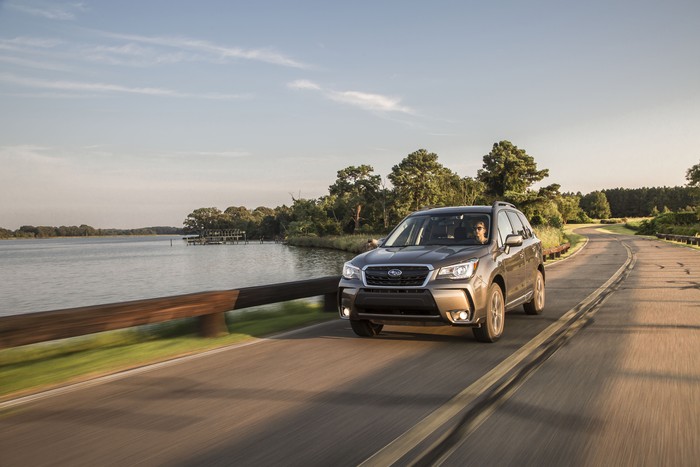
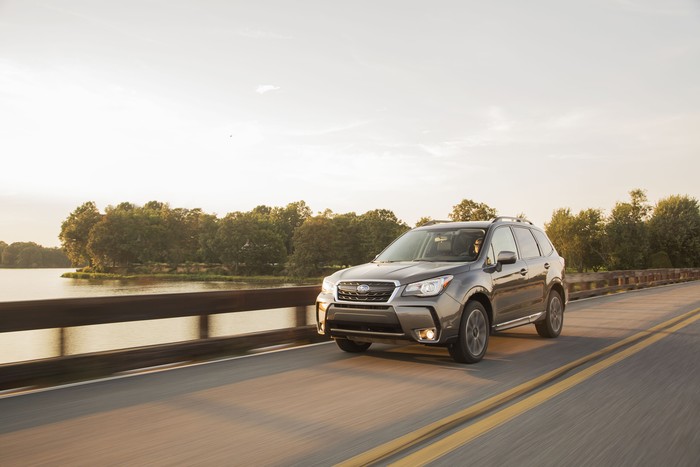
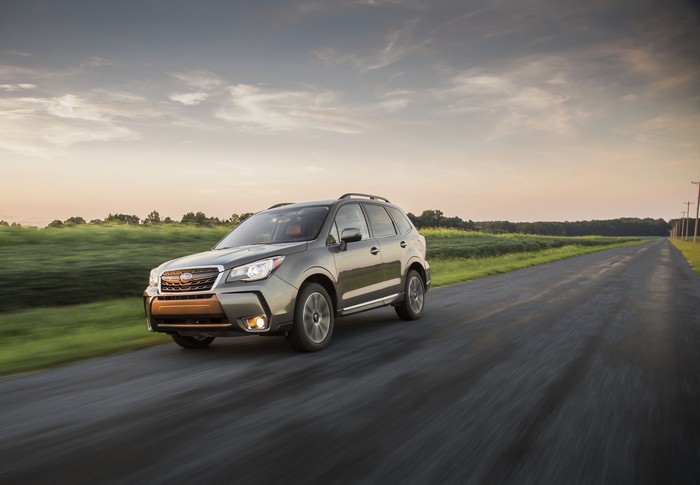
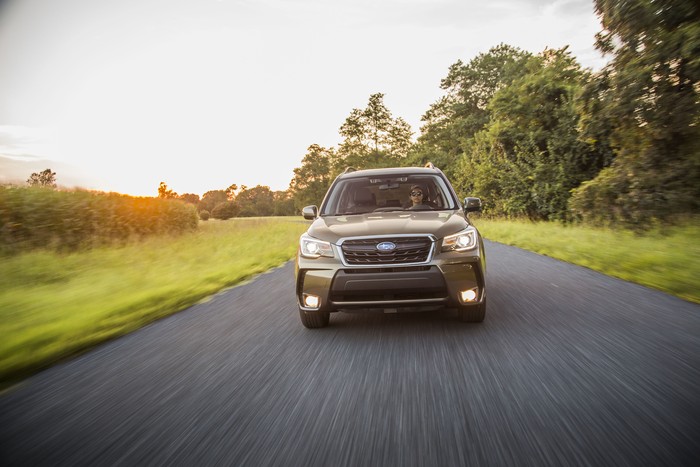
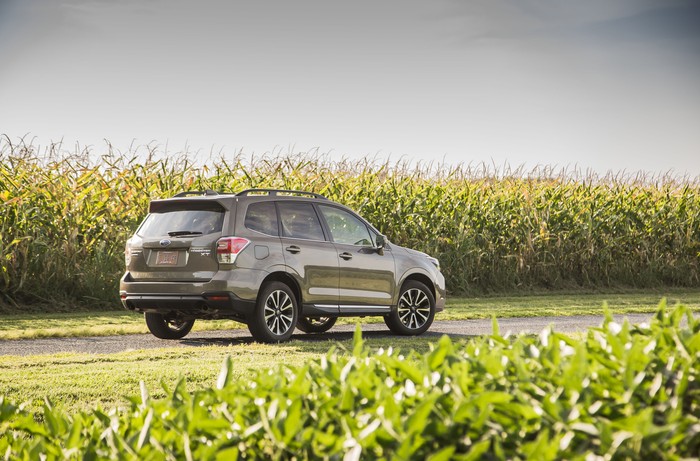
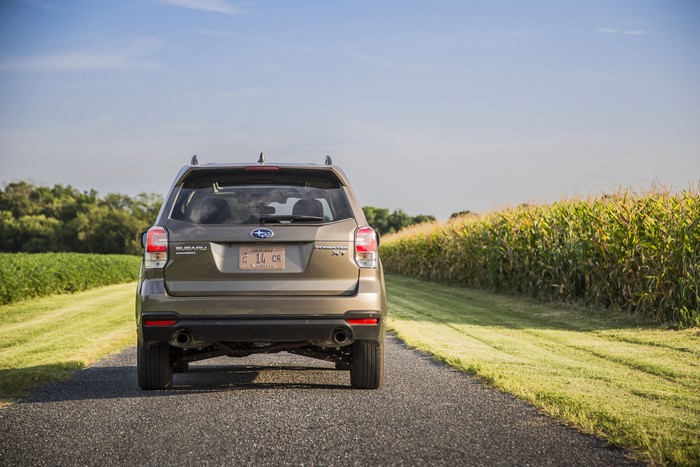
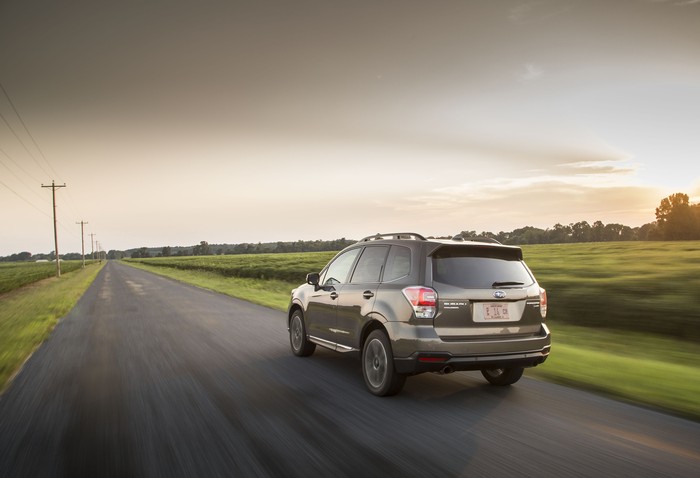
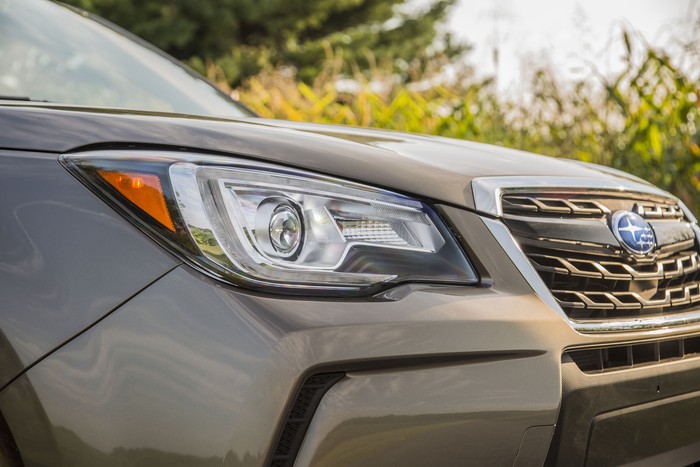
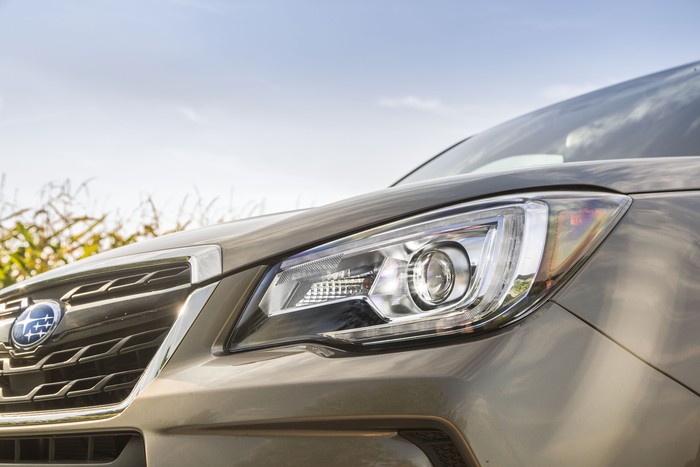
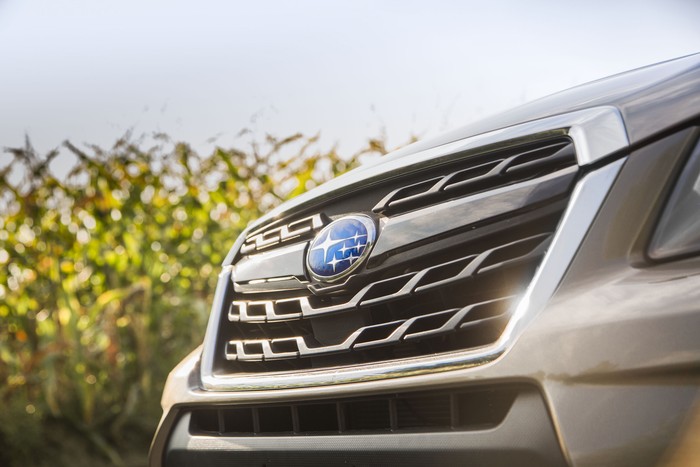
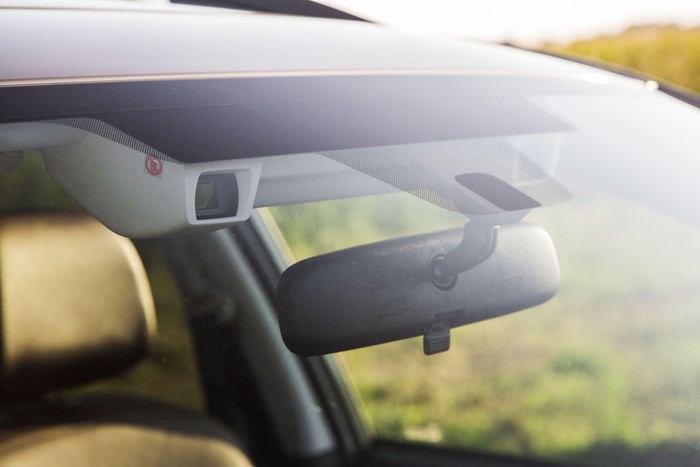
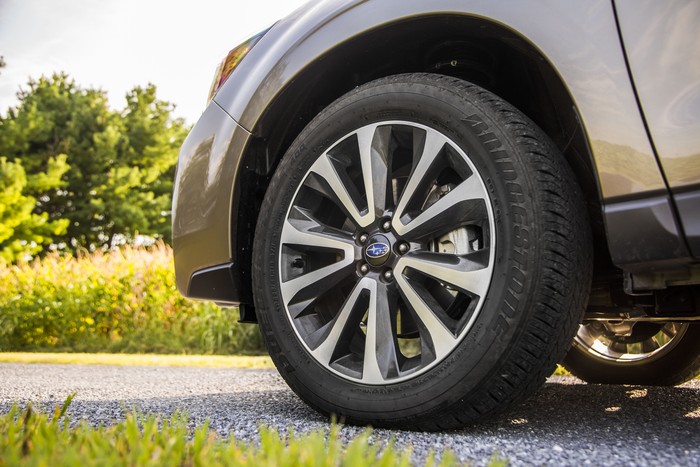
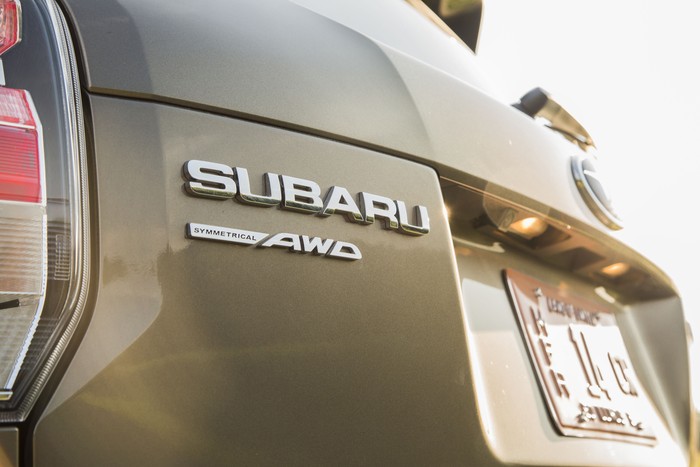
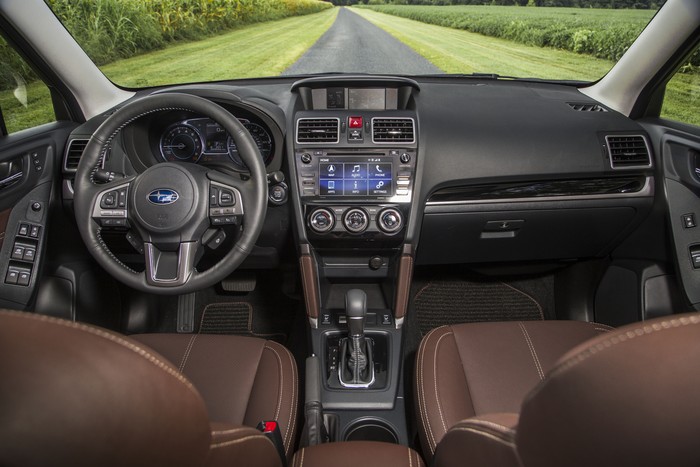
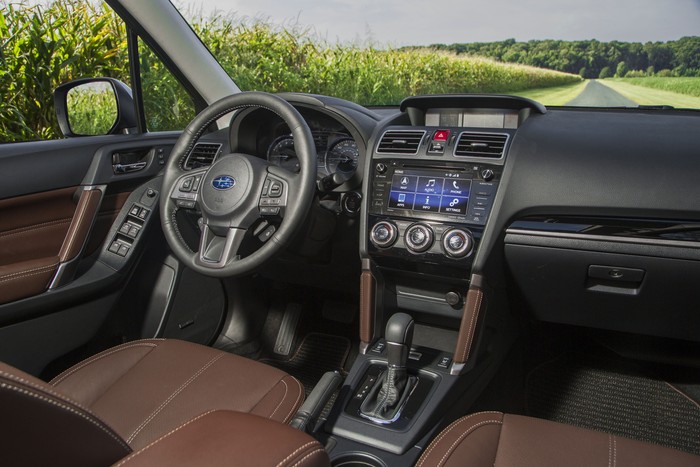
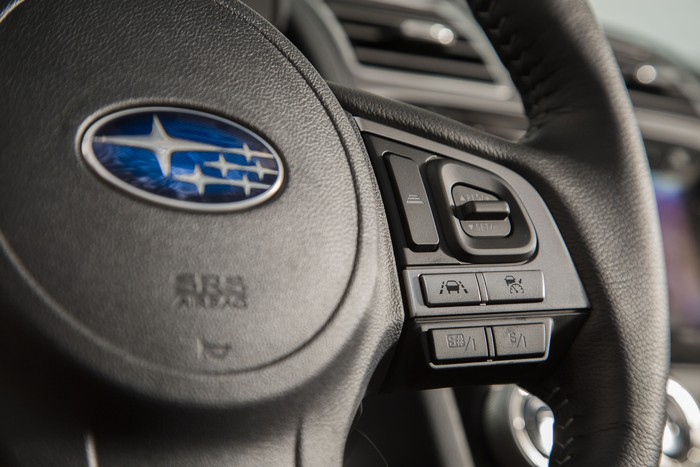

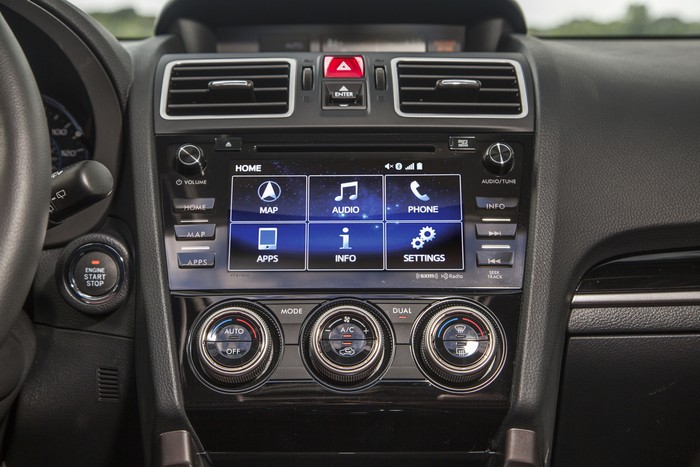
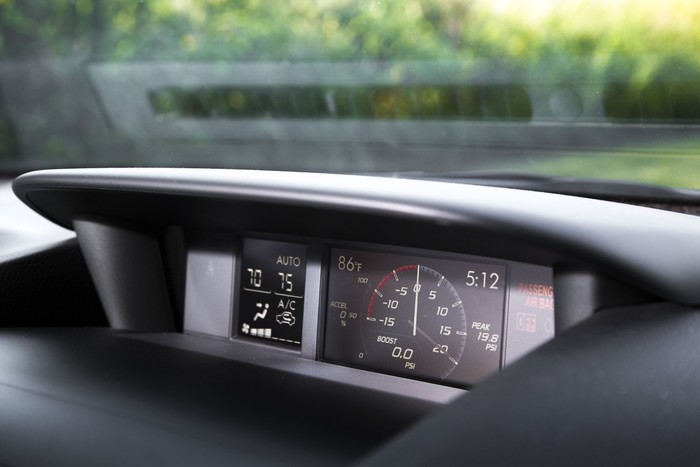
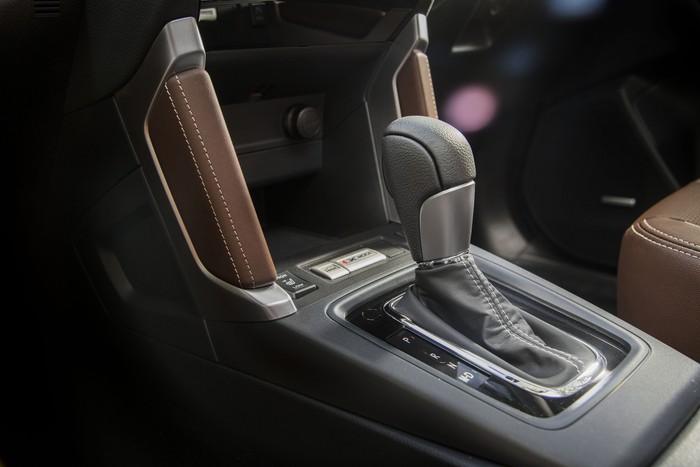
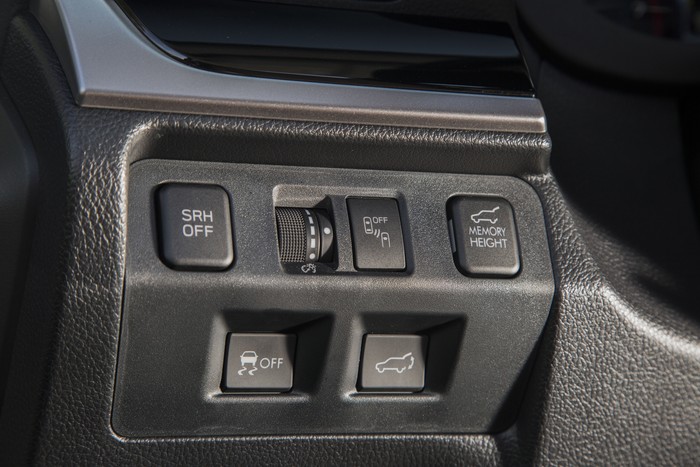
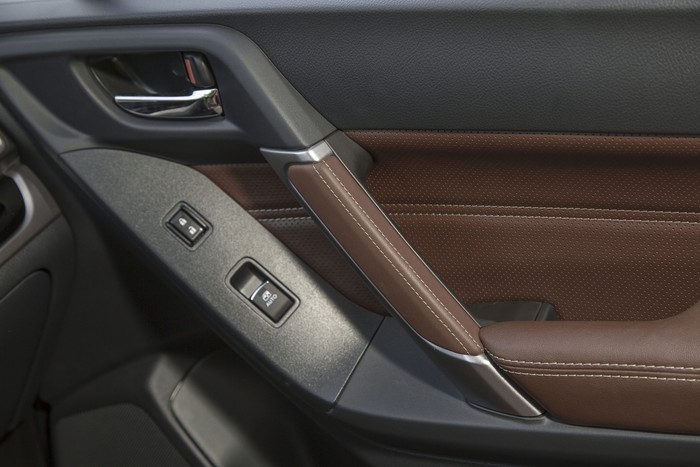
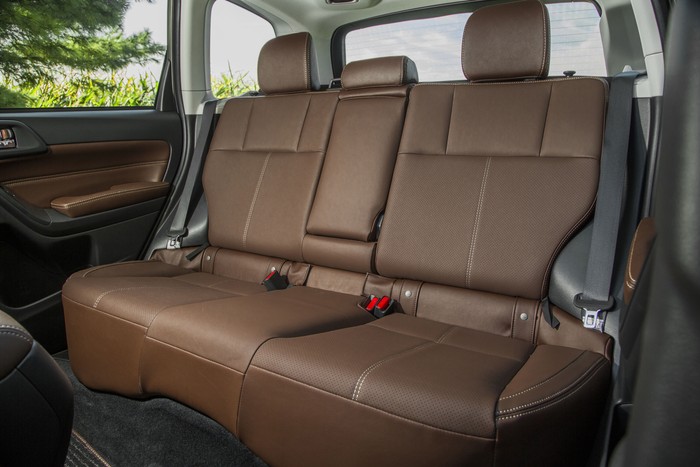
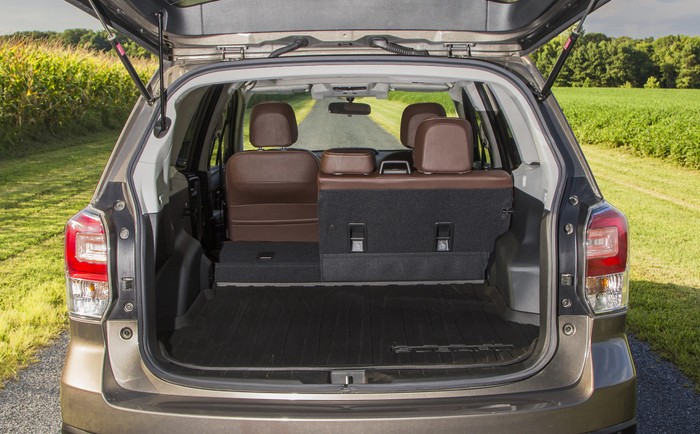
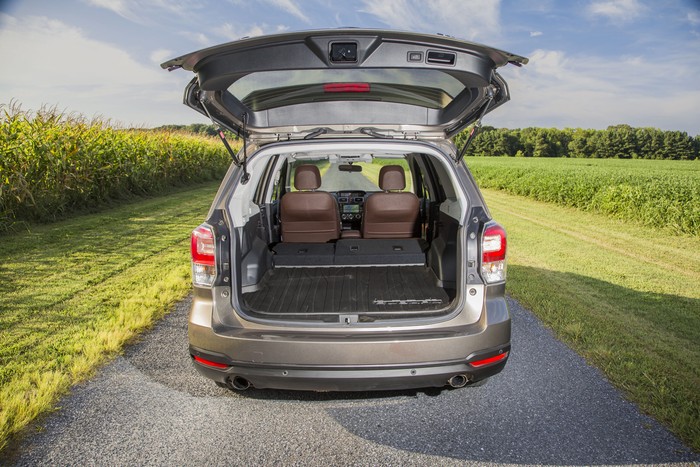
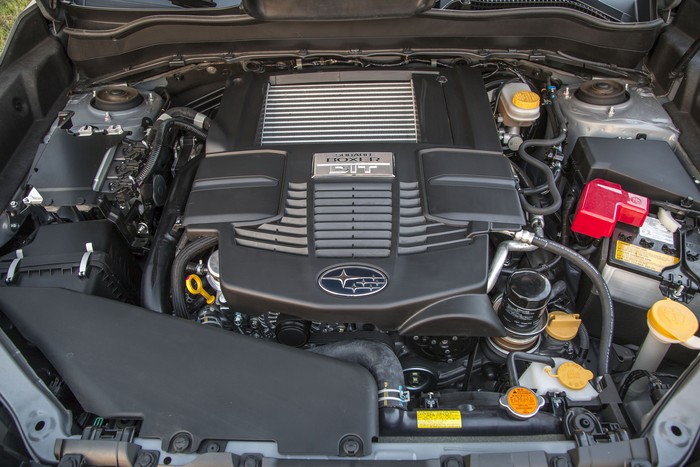
- Propulsion: Gas 2.5L I4
- Power: 170hp
@
5800rpm - Torque: 174ft⋅lb
@
4100rpm - Mileage: 24 MPG ( 22 city, 28 hwy)
- Transmission: 6-speed Manual
- Seating: 5 seats
in
2 rows - Passenger Volume: 108.3cu ft
- Length: 181.5in
- Wheelbase: 103.9in
- Height: 66.4in
- Weight: 3322lbs
- Cargo Volume: 34.4cu ft
- Front Leg Room: 43.0in
- Front Head Room: 41.4in
- Front Hip Room: 53.9in
- Rear Leg Room: 38.0in
- Rear Head Room: 39.8in
- Rear Hip Room: 53.0in
- Drag Coefficient: TBD
- Drag Coefficient: TBD